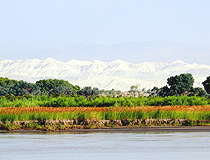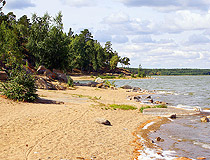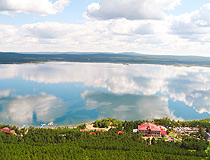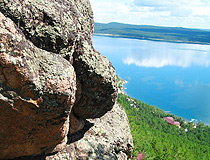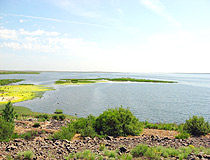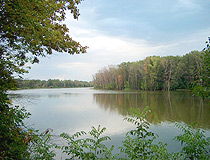Kazakhstan climate overview
It is only natural that with the vastness of Kazakhstan’s territory its climate should vary from one region to another. Thus, when the rivers and lakes in the northern regions of Kazakhstan are still icebound, sowing is in full swing and apricots are in blossom in the southern parts of Kazakhstan.
Kazakhstan’s inland situation determines the extreme continental, arid character of its climate. This is despite the fact that Kazakhstan has thousands of rivers and lakes and borders on the Caspian Sea, the biggest lake in the world, and the Aral Sea, the world’s fourth biggest lake.
Kazakhstan water resources
Rivers, seas, lakes, and man-made reservoirs in Kazakhstan are rich in fish. Among the commercial fishes found in Kazakhstan are sazan, pike perch, perch, bream, Caspian roach, sprat and other species. The Caspian Sea and the Ural River are major areas for breeding and catching sturgeon.
Kazakhstan has large reserves of underground water, mostly of an artesian type. The area of its ploughland is also immense. Kazakhstan accounts for 33 per cent of the total area of the country’s agricultural lands.
Today vast tracks of feather-grass steppes, which had been idle for centuries, yield generous harvests of golden grain.
More and more irrigation systems are being built in the steppe of Kazakhstan. With hundreds of wells sunk into the arid land, spouts of underground waters are now shooting up, as if whole schools of whales have by some miracle got to this torrid expanse.
And, together with water, cotton fields, fruit and vegetable gardens, parks, greenhouses and vast tracts of newly afforested areas have appeared in the steppe of Kazakhstan.
To preserve and multiply natural riches, numerous nature reserves have been set up in Kazakhstan. In the north of Kazakhstan, a land of grain fields, where each hectare of soil is worth its weight in gold, large areas have been set apart for the Naurzum and Kurgaldzhin reserves.


